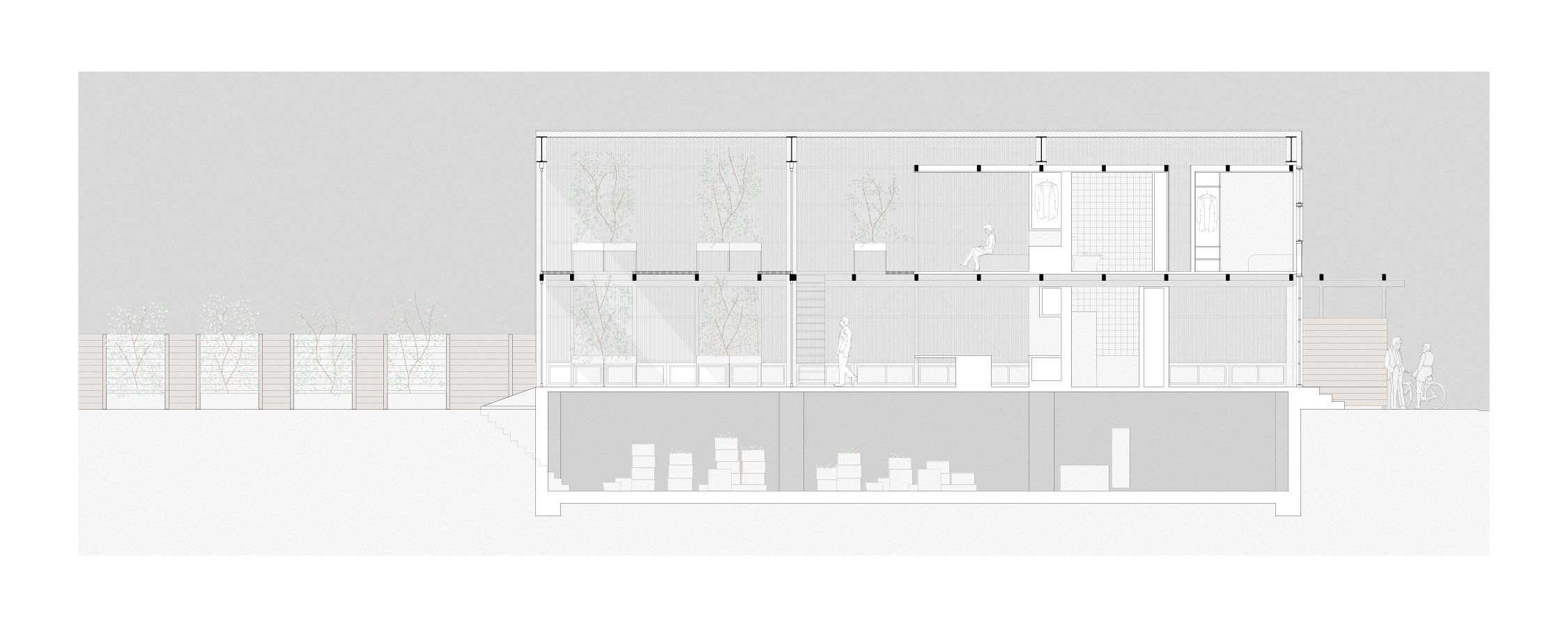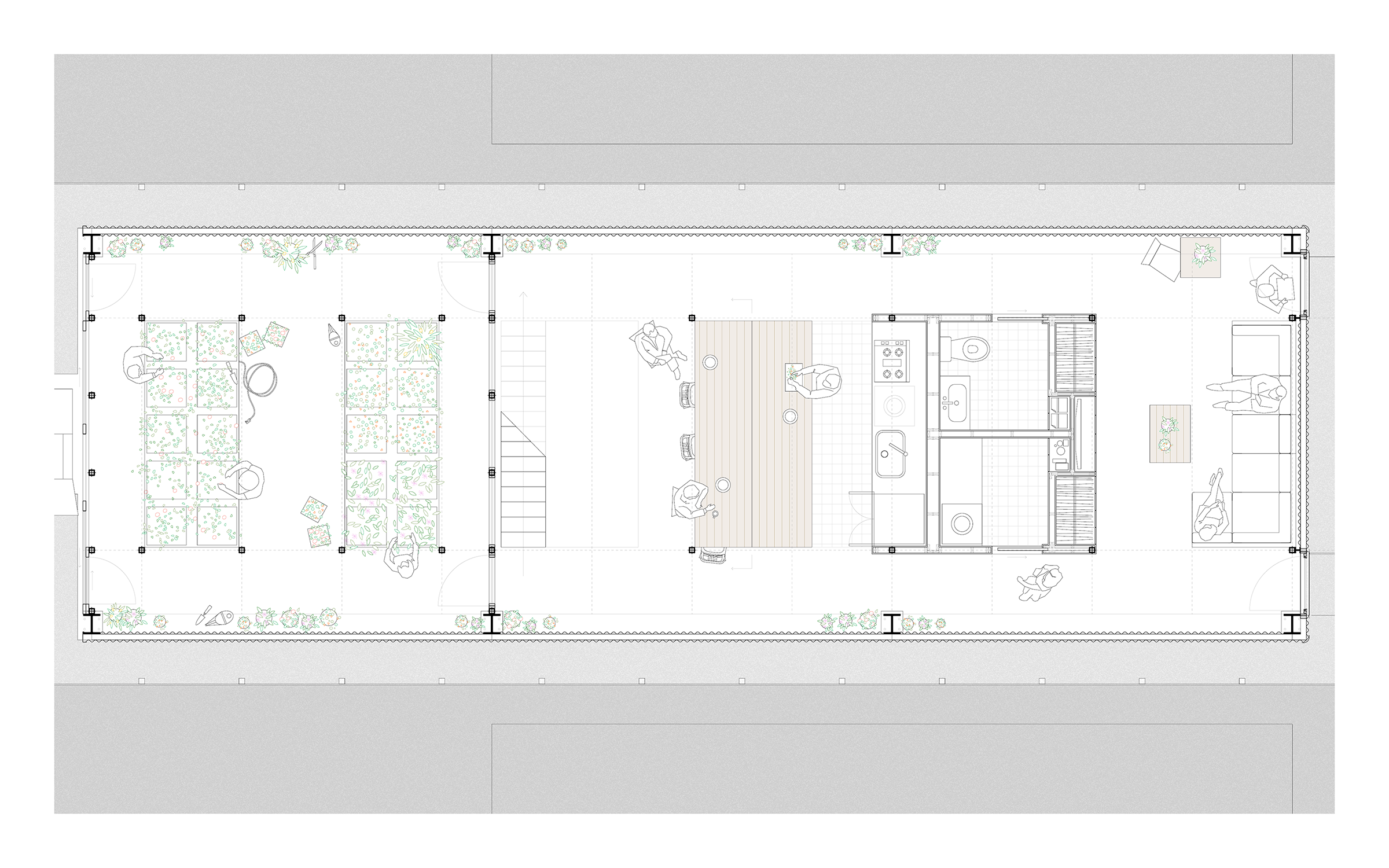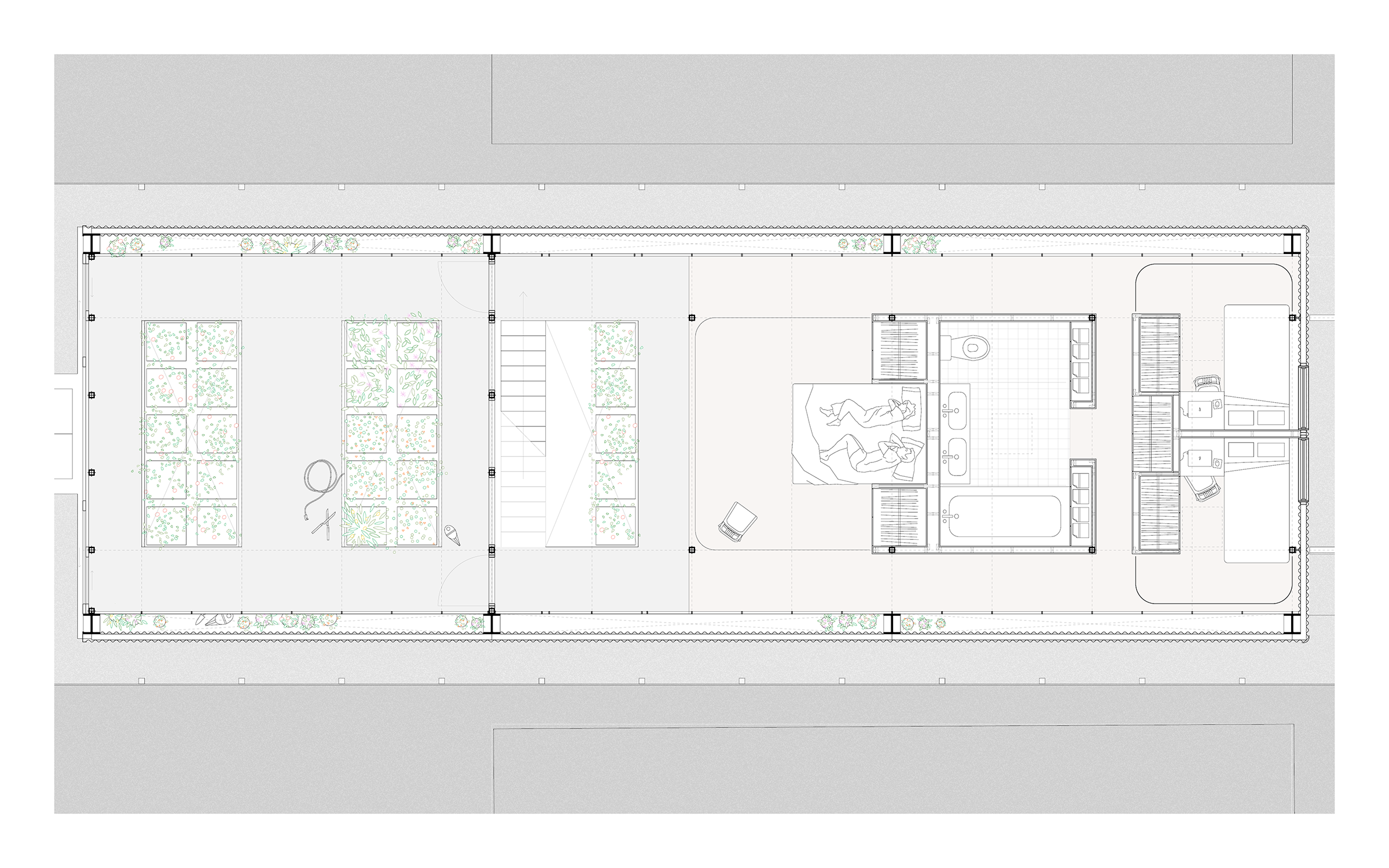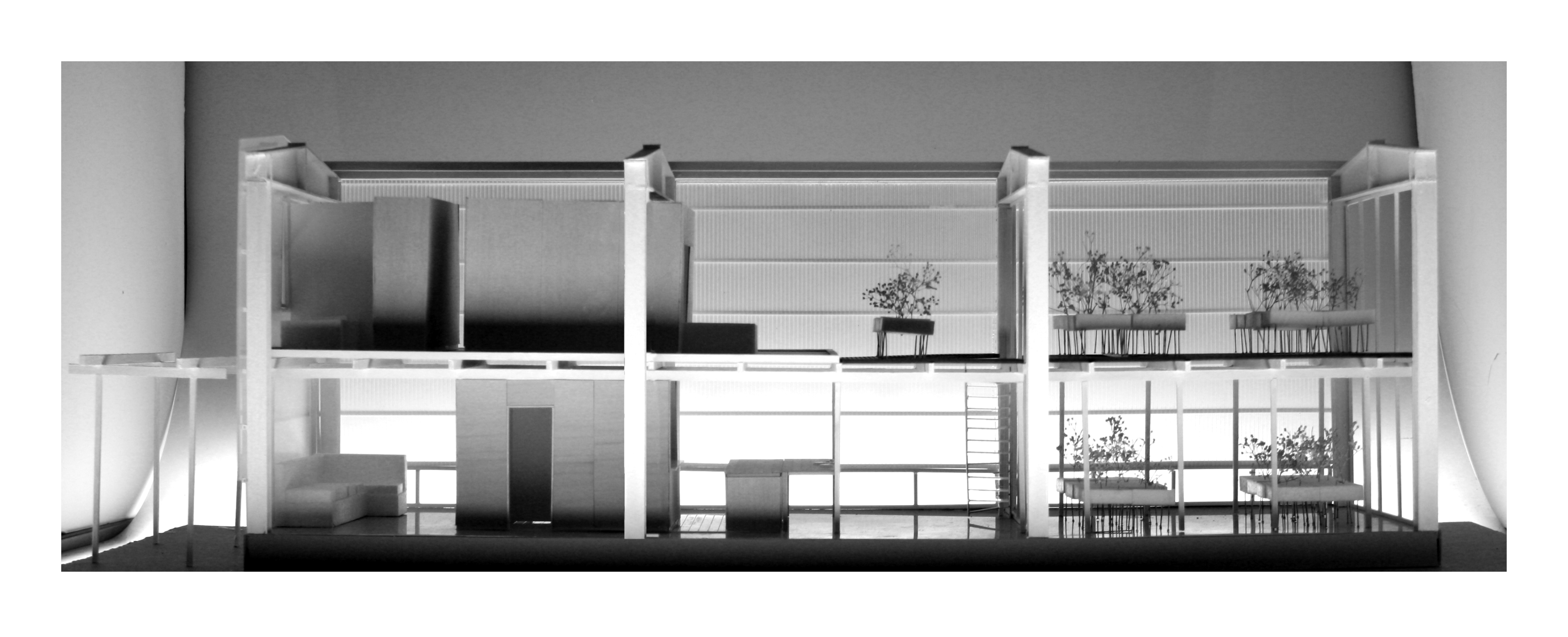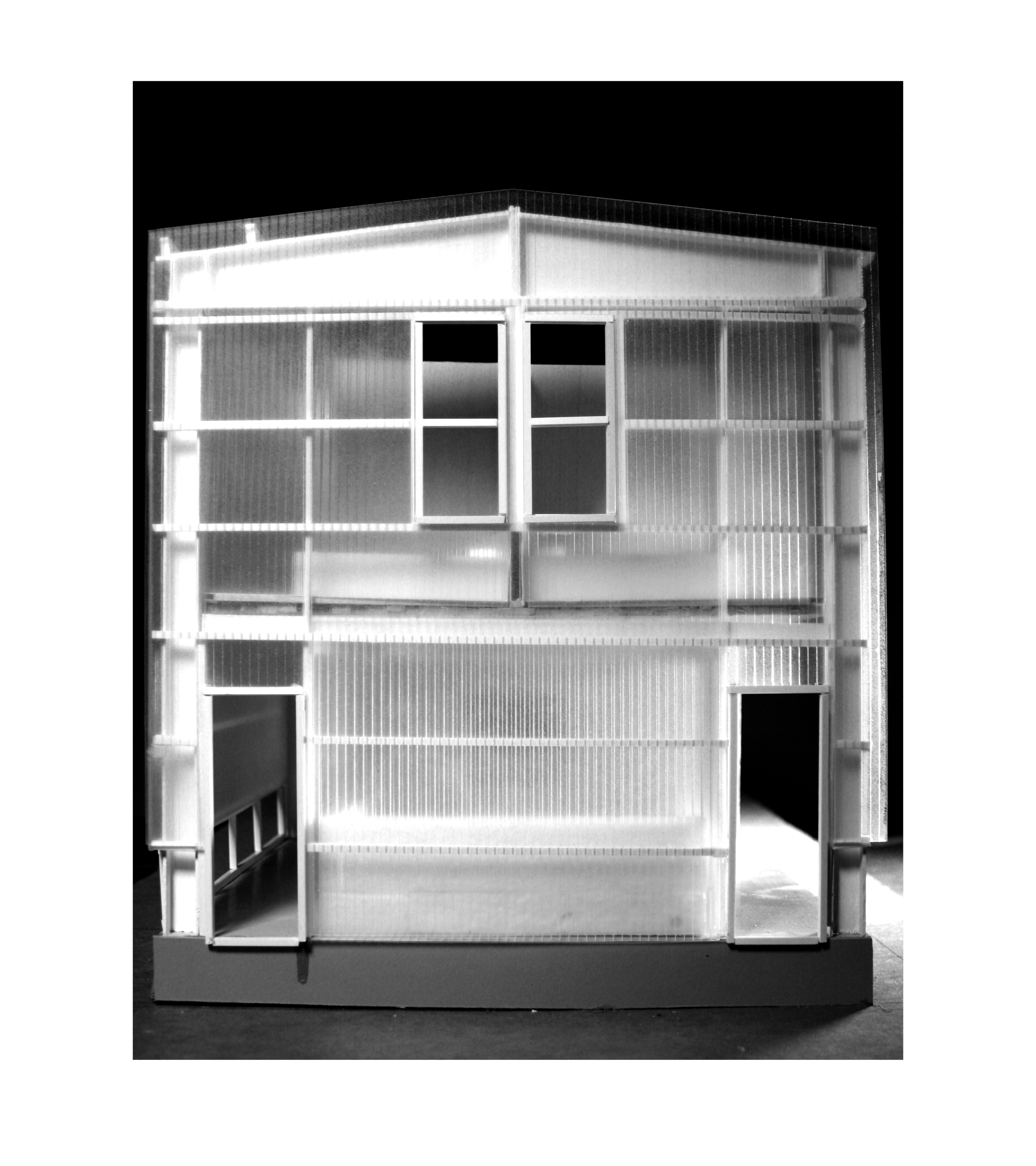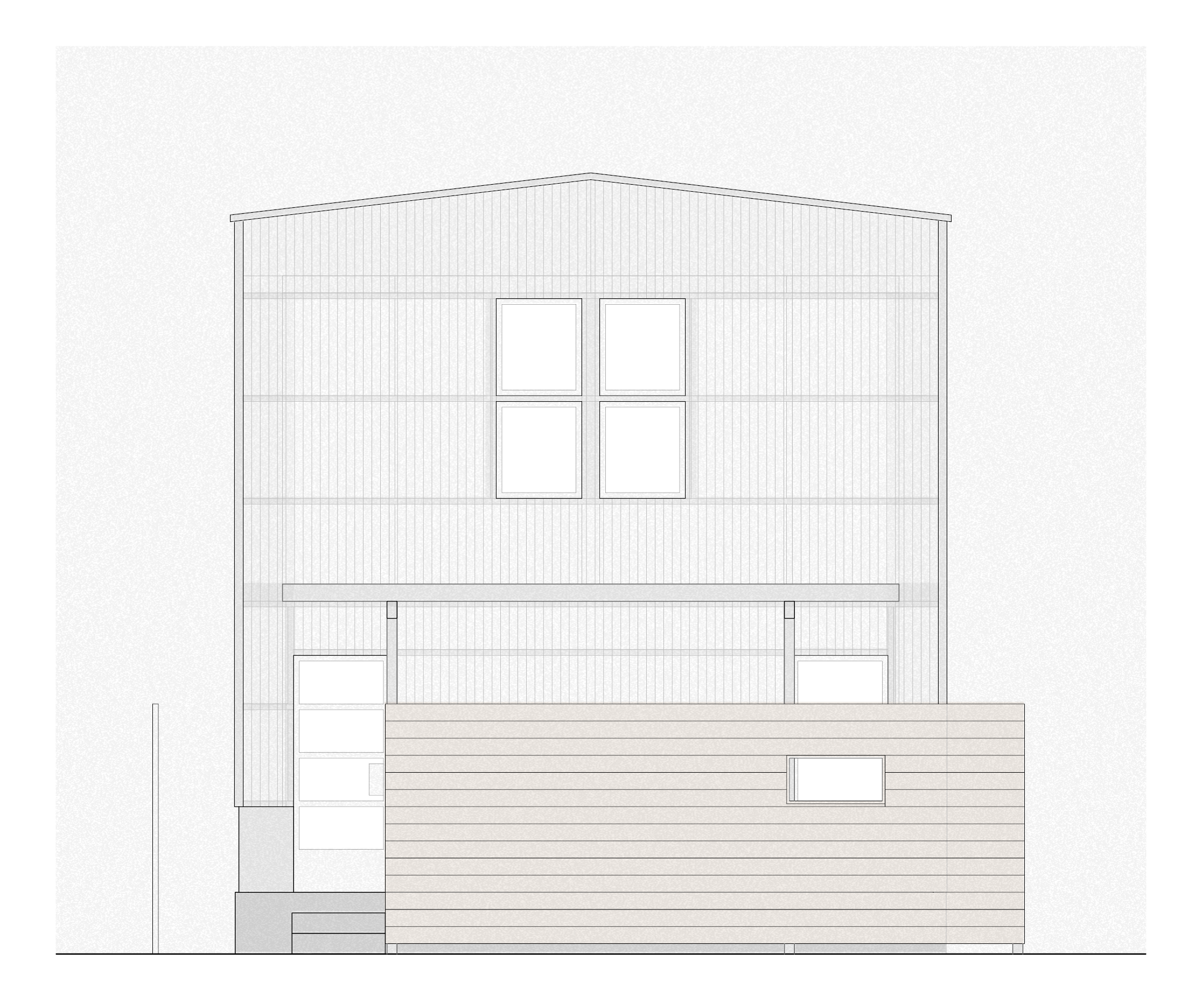chicago farmhouse
w/ tom beeby @ ysoa
This infill housing prototype is designed to fit on a typical vacant lot in Chicago’s Southside neighborhood. Like most American cities, large parts of Chicago lack access to healthy fruits and vegetables. Using an easily constructed industrial steel frame, this re-imagined urban farmhouse can grow food to distribute to the neighborhood year-round.
A temperature controlled basement functions as storage for on-site production with the potential to become a neighborhood storage facility for community farming on nearby vacant lots. These rapidly constructed and reproducable structures can provide families and neighborhoods with sources of healthy food and employment.
The modular Butler building structure is classicized, painted white and left exposed. The easily constructed frame is clad in a translucent envelope and a steel trellis forms an independent interior structure. The cladding is made of two layers of corrugated fiber-glass, attached on either side of the prefab Butler girts, sandwiching a layer of foamed polyethylene contained in plastic bags. The bags run linearly between the girts and provide insulation and an additional layer of cloudy translucency and privacy.
![]()
Initial Concept
Domestic living is contained in a central service core which can be efficiently controlled for temperature and humidity. Roller shades in the outer shell and heavy curtains in the inner core provide additional layers of thermal control, while linear vents along the bottom and the top of the building allow for easy ventilation. Residents can live intimately with their domestic garden while maintaining adequate separation from the humidity and heat gain of the attached greenhouse.

